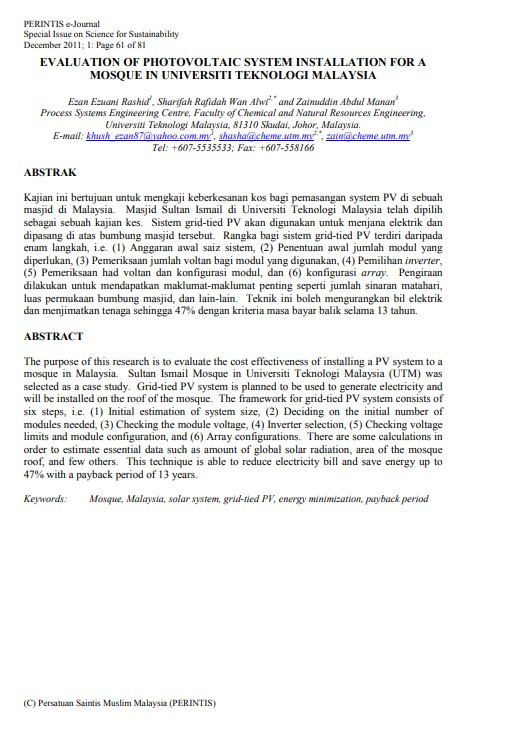
The purpose of this research is to evaluate the cost effectiveness of installing a PV system to a
mosque in Malaysia. Sultan Ismail Mosque in Universiti Teknologi Malaysia (UTM) was
selected as a case study. Grid-tied PV system is planned to be used to generate electricity and
will be installed on the roof of the mosque. The framework for grid-tied PV system consists of
six steps, i.e. (1) Initial estimation of system size, (2) Deciding on the initial number of
modules needed, (3) Checking the module voltage, (4) Inverter selection, (5) Checking voltage
limits and module configuration, and (6) Array configurations. There are some calculations in
order to estimate essential data such as amount of global solar radiation, area of the mosque
roof, and few others. This technique is able to reduce electricity bill and save energy up to
47% with a payback period of 13 years.
I agree to the terms outlined below:
You agree to upload and assign Mosqpedia Database the rights to use the content worldwide and in perpetuity across all current and future media platforms. Mosqpedia Database may edit, copy, adapt and translate your contribution.
The content will be distributed under the Creative Commons Attribution-Deed – Attribution-NonCommercial-NoDerivatives 4.0 International – Creative Commons
All data will be stored in line with data protection regulations.